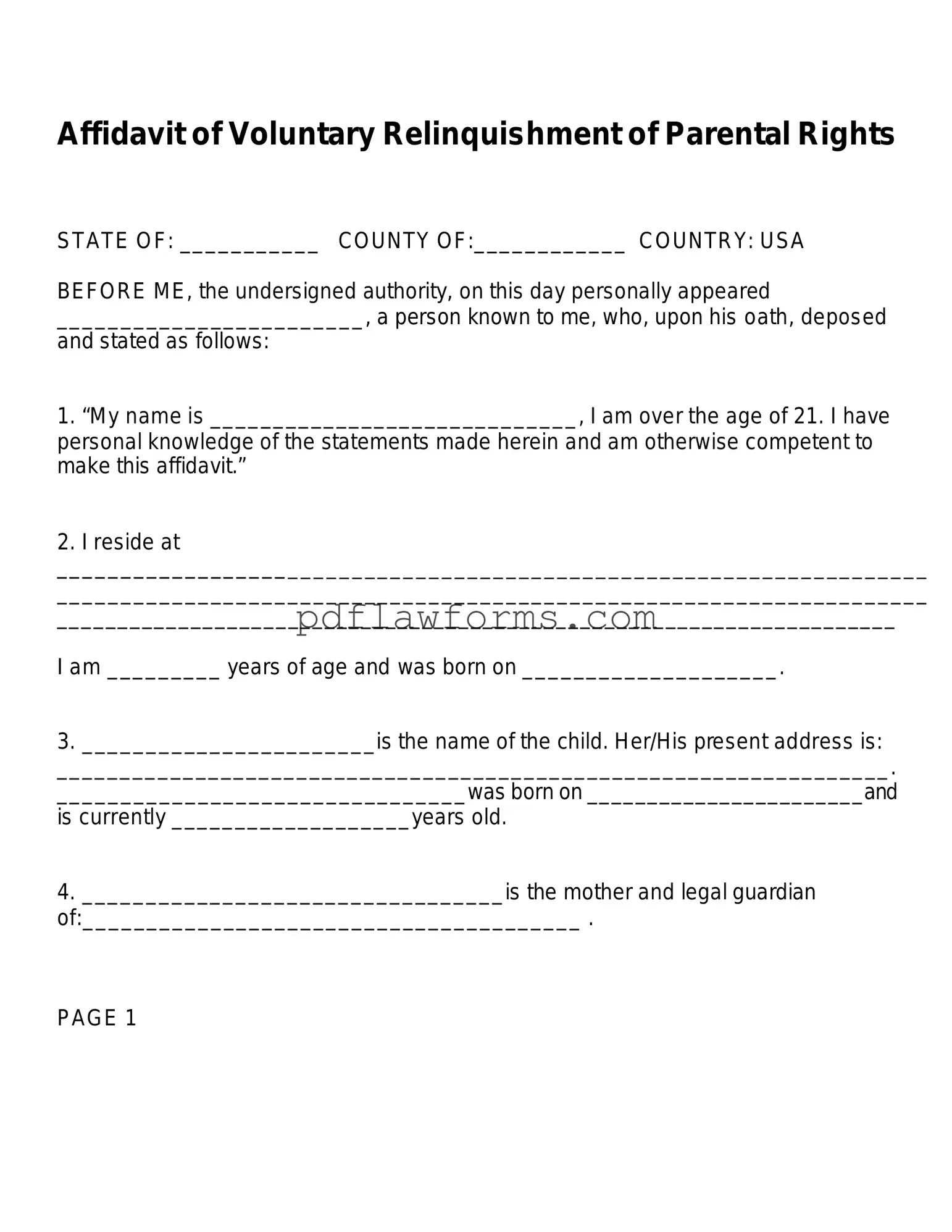Misconception 1: The Affidavit Parental Rights form is easy to reverse.
Many believe that once they sign the affidavit, they can change their mind at any time. In reality, relinquishing parental rights is a serious commitment. It becomes irrevocable after a specific period, typically 11 days, unless proper steps are taken to revoke it within that timeframe.
Misconception 2: Signing the affidavit means you lose all rights immediately.
While the affidavit does indicate a relinquishment of rights, it does not mean that those rights are lost instantly. There is a process involved, and understanding the implications is crucial before signing.
Misconception 3: The affidavit can be signed without understanding its contents.
Some people think they can just sign the document without fully grasping what it entails. It is essential to be informed about parental rights and duties, as well as the consequences of relinquishing them.
Misconception 4: The affidavit is only for parents who want to give up their child for adoption.
While it is often associated with adoption, this affidavit can also be used in various situations where a parent may wish to terminate their parental rights for other reasons. Each case is unique and should be evaluated individually.
Misconception 5: You don’t need legal advice before signing.
Many individuals think they can handle the process on their own. However, seeking legal advice can provide clarity and ensure that all options are considered before making such a significant decision.
Misconception 6: The affidavit process is the same in every state.
Assuming that the affidavit process is uniform across all states can lead to misunderstandings. Each state has its own laws and procedures regarding parental rights, and it is vital to be aware of the specific regulations in your state.
